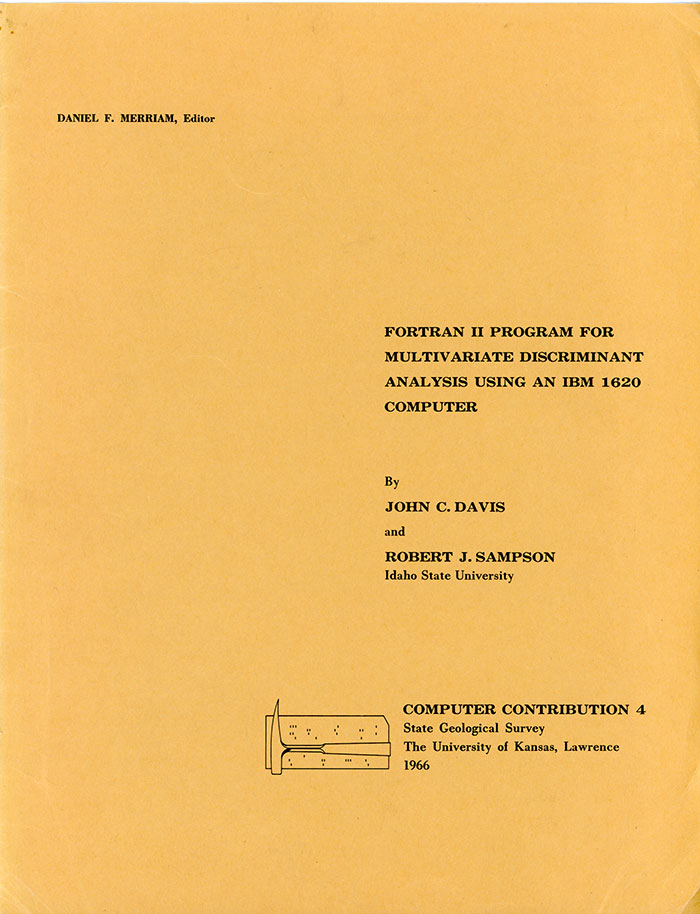
Kansas Geological Survey, Computer Contributions 4, originally published in 1966

Originally published in 1966 as Kansas Geological Survey Computer Contributions 4.
Multivariate discriminant analysis is a statistical method of assigning samples to previously defined populations on the basis of a number of variables considered simultaneously. If two sets of samples can be assigned to different populations on the basis of prior knowledge, they can be used to establish criteria for the classification of additional samples. In addition, the validity of the original classification can be tested. Discriminant analysis has been used to distinguish marine from fresh-water shales (Potter, Shimp, and Witters, 1963), to establish tectonic settings of sandstones (Middleton, 1962) and volcanics (Chayes, 1964), to classify depositional environments of carbonates (Krumbein and Graybill, 1964), and to distinguish ore-bearing from barren sediments (Griffiths, 1957). Mellon (1964) has used the method to determine parameters controlling cement distribution in sandstone. The technique was originally developed by Fisher (1936) and has been widely used in biometrics and paleobiometrics (for applications, see Miller and Kahn, 1962, p. 277).
A population described by K variables may be pictured as a cluster of sample points in K dimensional space. A second population, described by the same K variables, consists of a second cluster of points. Discriminant analysis is the computation of a K dimensional plane that most efficiently separates the two clusters. An unknown sample is classified as belonging to one group or the other, depending upon which side of the plane it falls. In addition, the "locations" of the two populations are described by the K dimensional coordinates of their multivariate means. The degree of distinctness of the two groups is measured by the "distance" between these means.
Several methods of discriminant analysis have been devised. However, with one exception, all techniques described in the geological literature involve generation, inversion, and solution of a matrix. Matrix inversion is so laborious that it is essentially limited to computer operations, and in the case of large matrices, to large computers. Because the IBM 1620 has limited storage capacity, any approach of this type is restricted to small numbers of variables. Matrix inversion is avoided by using a modification of a procedure suggested by Rao (1952, p. 262-264) in which samples are operated upon one at a time. The method used by Miller and Kahn (1962, p. 276-283) is similar, but results are not comparable to those produced by matrix inversion. An excellent introduction to the procedure used here is given by Li (1964, p. 403-415).
Read the PDF version (2.6 MB)
Kansas Geological Survey
Placed on web Aug. 26, 2019; originally published 1966.
Comments to webadmin@kgs.ku.edu
The URL for this page is http://www.kgs.ku.edu/Publications/Bulletins/CC/4/index.html